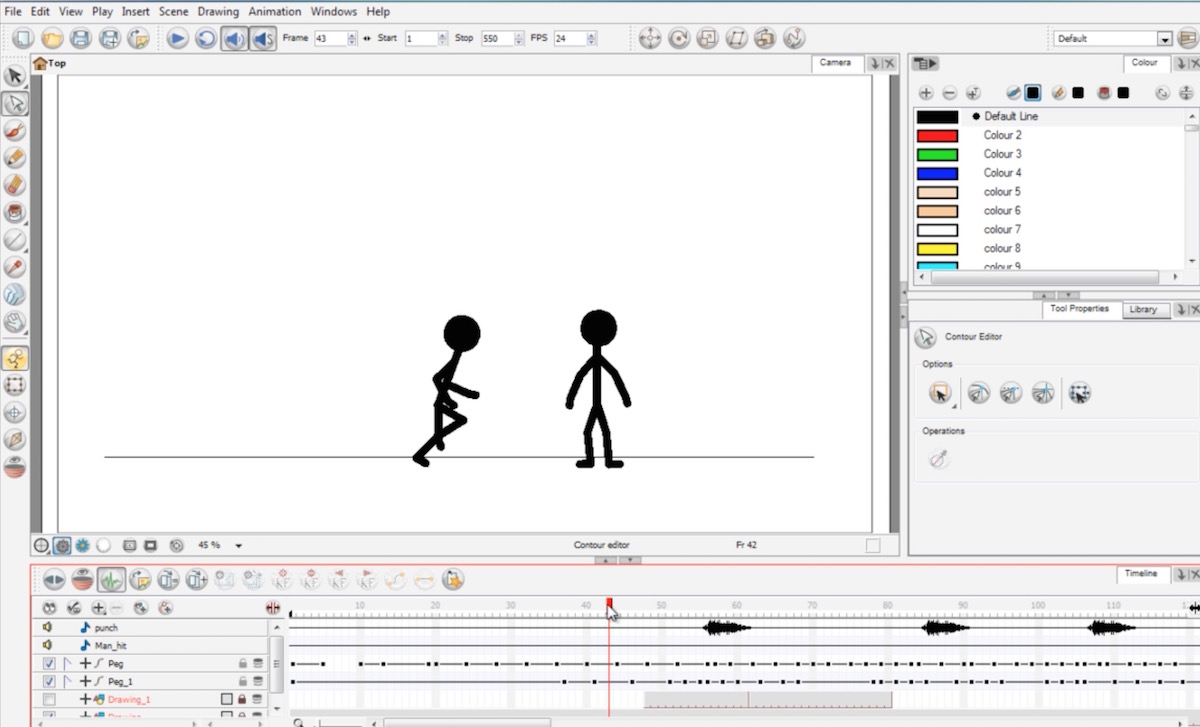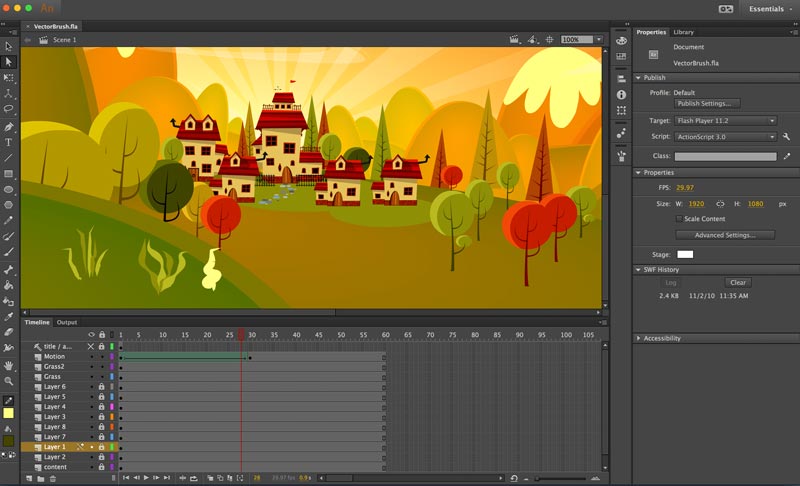
- Adobe animate cc 2019 hit frame for free#
- Adobe animate cc 2019 hit frame software#
- Adobe animate cc 2019 hit frame download#
mp3 file (in this example: “week6_ballBounce_unedited.mp3”) Go to File > Import > Audi o… and select the desired.We’re now ready to import the ball bounce sound file we found online:

You can also click on the center of the label icon and move it along the Timeline.įinally, you can also select the area around a label and hit Command + Kto remove it (however this will shorten the Timeline and shift all the other labels) If you need to remove or change the position of a label, go to Tracks > Edit Labels…this will bring you to an editable table. Completed label track with all frames with bounces labeled Repeat for all the bounces in your animation. Type in the name of the label in the provided area.Go to Tracks > Add Label At Selection(or Command + B).This will move the cursor on frame 132 in the Timeline Set the Selection Startand Endcounter to 132.fla file by clicking on one of the downward arrows and selecting from the dropdown (in this case, choose film frames (24fps))Ĭreate the label for the first ball bounce (at frame 132 in this example): First, make sure the counters at the bottom of the window are set to the same frame rate as your.This track will not contain sounds but serve as a reference. We’ll translate the frames we wrote down while watching the animation into markers by using a Label Track. aup file and its _data folderĬreating a Label Track for the ball synch The latter will not open properly without its associated data_folder. You don’t need to open or edit the content of this folder, but you must always keep it alongside the.

When Audacity saves a project, it automatically generates a “_data” folder along with the. Name the project, choose the location you want to save it to, and make sure the format is set to Audacity project (*.aup) (Audacity’s proprietary file format.Empty Audacity projectīefore we start adding anything, let’s save the project: If it opens to an existing project go to File > New.
Adobe animate cc 2019 hit frame software#
The software should open to a new project (a blank window with the tools panel at the top). Let’s start with the ball bounces: we’ll write down on which frames the ball hits the wall/ground in the animation:Īs for the music we want it to start and end at the same time as the animation and fade at the same pace as the animation: The first step is to closely watch our animation and to write down when we want certain sounds to come in. We’ll edit the “ball bouncing” sound we found online so it syncs with the ball in the animation, and add music throughout – fading it with the image. fla file, the animation is set to 24fps, begins and ends with a fade from/to black, and shows a ball bouncing within a room. (I credited them in the description of the Vimeo upload as well).
Adobe animate cc 2019 hit frame for free#
They can be used for free but their author should be credited: The music track was downloaded on (filtered through CC) and the sound effect on. fla file with no sound as well as the 2 unedited. The principles covered in this tutorial can be applied to any soundtrack, but we will be using an existing animation and sound samples to get us started. fla as well as the Audacity files here:Ĭreating an animation and downloading sounds and music
Adobe animate cc 2019 hit frame download#
You can watch the finished example below and download the. We will edit our soundtrack in Audacity (a free and open source software that can be downloaded here), export it to.

While Adobe Animate has some sound editing tools, they are pretty rudimentary.

Sound effects and music can really enhance your animation by enriching the environment and calling attention to certain elements.


 0 kommentar(er)
0 kommentar(er)
